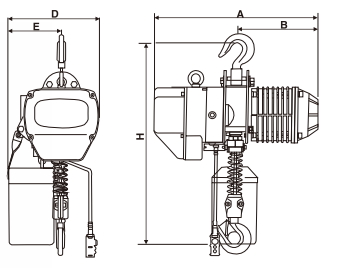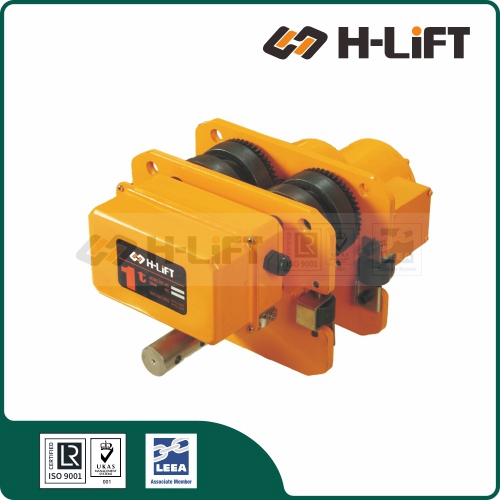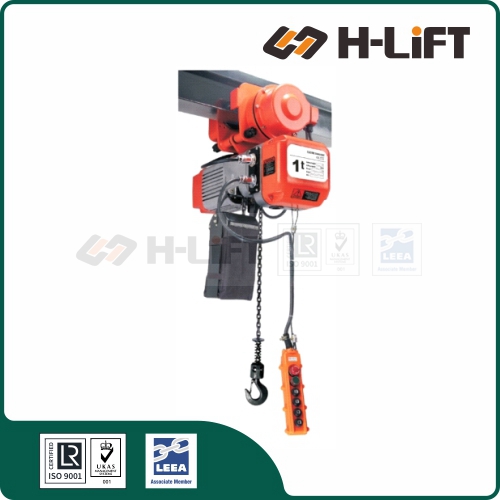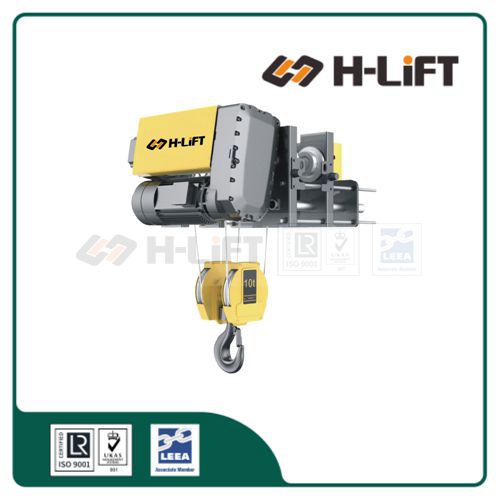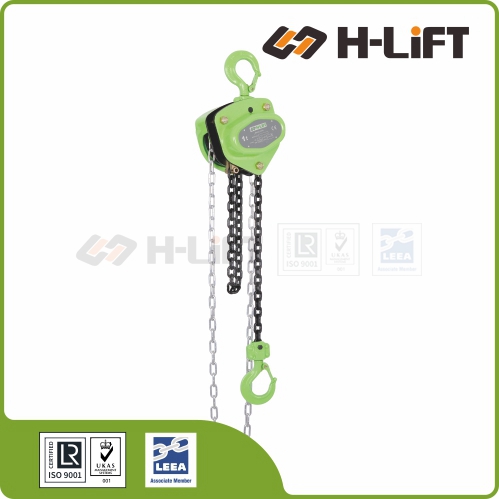ALWAYS:
• Store and handle electric chain hoists correctly.
• Inspect the hoist and accessories before use and before placing into storage.
• For top hook suspension, use hooks that are fitted with safety catches or mouse the hook and ensure the support fits freely into the seat of the hook.
• For trolley suspension, ensure the trolley is correctly set for the beam width.
• Check that the bottom hook will reach its lowest point without running the chain or rope fully out.
• Raise the load just clear then halt the lift to ensure the integrity of the hoist before continuing with the lift. If the hoist has more than one speed, start in the slow speed.
NEVER:
• Expose power operated hoists to chemicals, particularly acids, without consulting the supplier.
• Expose power operated hoists directly to the elements, water spray, steam etc without consulting the supplier.
• Replace the load chain or rope with a longer one without consulting the supplier.
• Use the load chain or rope to form a sling.
• Change motions without first allowing the motor to stop.
• Allow persons to ride on power operated hoists.
Selecting the Correct Hoist
Power operated hoists are available in a range of capacities, designs and suspensions with electric or pneumatic power options. Select the hoist to be used and plan the lift taking the following into account:
Type of hoist - chain, wire rope - electric, pneumatic - class of use - capacity and range of lift etc.
Type of suspension - hook, trolley, fixed.
Speeds and control - single speed, dual speed - pendant push button, pull cord, remote etc.
Power operated hoists are designed for vertical lifting only.
Consult the supplier if the hoist is to be used in areas of high risk, exposed to the elements, water, steam etc, with hazardous substances, eg acids or chemicals, or subjected to extremes of temperature.
Storing and Handling Power Operated Hoists
Never return damaged hoists to storage. They should be dry, clean and protected from corrosion.
In the case of hoists used for temporary applications, store them on a purpose made rack or suspended from their top suspension fitting. Trailing cables, pendants etc may be removed, identified and stored separately to prevent loss or damage whilst in store.
In the case of hoists left in situ, park the hoist in a suitable position so that it is protected from damage and does not present a danger. Raise the bottom hook so that it is not a danger to persons or liable to become accidentally engaged.
Isolate the power supply.
Installing and Commissioning
Follow the specific instructions for installation and commissioning issued by the supplier and the general requirements given overleaf. Ensure the controls work in the correct direction and that motion limits are set and operate correctly. If the hoist fails to operate correctly contact the supplier.
Using Power Operated Hoists Safely
Do not use defective hoists, slings or accessories.
Check the slinging arrangement, that the hoist is safely rigged, that the chain or rope is not twisted and that the load is free to move.
Raise the load just clear, halt the lift to ensure the integrity of the hoist, slinging arrangement etc. Always commence lifting in the slow speed. Avoid unnecessary inching of the load.
Check the travel path is clear and that you have a clear view so as to avoid accidental hook engagement or collision. Follow any particular site safety rules applicable to the movement of suspended loads.
Keep fingers, toes etc clear when lowering loads.
In-service Inspection and Maintenance
Follow the specific instructions for maintenance issued by the supplier. These should be incorporated into the site maintenance programme observing any particular needs due to the site or working conditions.
Regularly inspect the hoist and, in the event of the following defects, refer the hoist to a Competent Person for thorough examination: operational faults; hoist will not lift; slips back; motion commands reversed; over-runs when command released; wear; damage to trolley, hooks and fittings; damaged, worn or corroded chain or rope; other visible defects.





